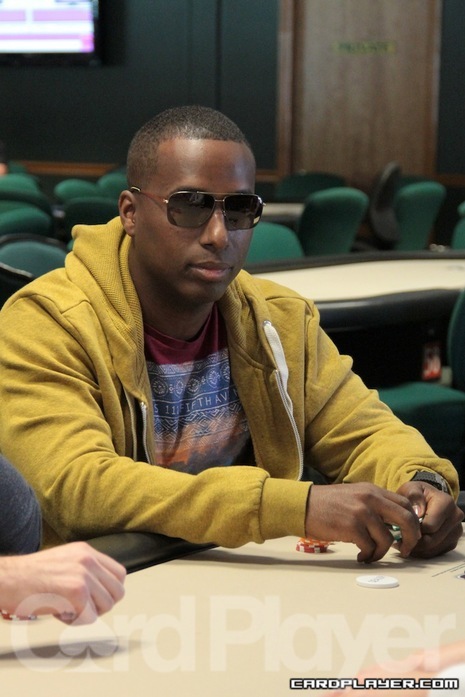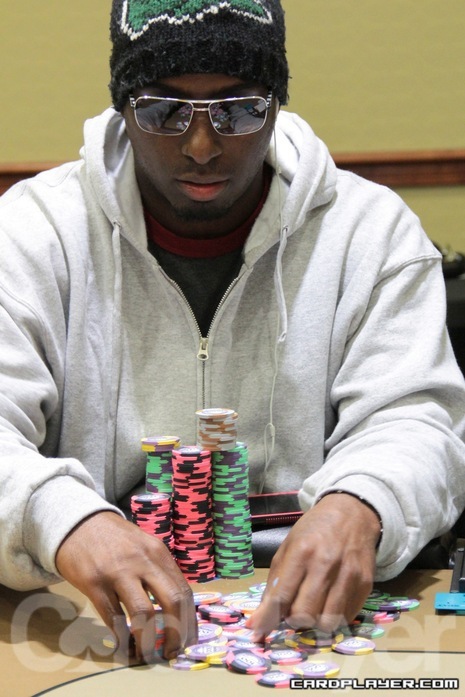






A Poker Life: Maurice HawkinsHawkins Passes Up Medical School To Pursue Career In Poker |
|
|
Maurice Hawkins believes that he can be a source of inspiration to those of us in the poker world on the outside looking in. According to Hawkins, if he can be a successful poker professional, so can anybody.
“Not everyone can be the guy in the high roller events who travels all over the world playing high stakes against the best players,” said Hawkins. “Only a small handful of players ever make it that far. But anyone can do what I’ve done if they work at it.”
The truth is that Hawkins is being modest. The 36-year-old poker pro has been in the game for 12 years and is one of the hardest-working grinders on the circuit today. He is tied for third place on the all-time World Series of Poker Circuit leaderboard with seven wins and recently became the first player to win back-to-back WSOP Circuit main events.
After Hawkins graduated from college, he had the opportunity to attend medical school. Instead, he chose the life of a professional poker player and has since racked up more than $2.2 million in live tournament earnings.
From Football To Poker
Hawkins grew up in St. Louis and grew up with a passion for the game of football. Even when his size forced him off the field, he worked hard on improving his skills.
“From the point that I could stand, my mom was putting me in a football stance,” Hawkins recalled. “I played as a kid, but I had to stop because I was actually too big to play. They only let you play one year above yours if you exceed the weight limit, so I had to sit out for a couple years until I leaned out before high school.”
 Although he played defensive end and center when he was one of the biggest kids on the field, he transitioned to nickelback after taking a scholarship to play football at Alabama A&M University. Unfortunately for Hawkins, an injury ended his football career prematurely.
Although he played defensive end and center when he was one of the biggest kids on the field, he transitioned to nickelback after taking a scholarship to play football at Alabama A&M University. Unfortunately for Hawkins, an injury ended his football career prematurely.
“I was in the dorm one night and a guy came in with a gun. I kind of disabled him and his friend, but I ended up ripping my hamstrings when I chased them down.”
Hawkins was a third degree brown belt and could more than hold his own against a couple of criminals, but the experience made him rethink Alabama A&M, and as a result, he went home. But his mother still wanted him in college, so he ended up at Bethune-Cookman University in Daytona Beach, Florida.
“Right around that time, I was on crutches. I knew I had to do something because I was losing my mind with boredom. So I went into a casino, the old Seminole casino, and started playing cards. They used to have these Omaha sit-n-gos where they would stop play after 50 hands and the winner was whomever had the most chips. Then, as the poker boom happened, I started playing more no-limit hold’em tournaments.”
Hawkins graduated from college with a degree in biology and a minor in chemistry. He could enroll in medical school, but the thought of six more years of school and time away from his son made him rethink his plan and give poker a shot.
“My mom has always been supportive,” he said. “She told me that if I wanted to be a doctor, I should be the best doctor. If I wanted to be a comedian, I should be the best comedian. Even if I wanted to be a thief, I should be the best thief. She always stressed to me that no matter what I chose in life, I should give it my all so I’m not left with any regrets.”
Poker Beginnings
Hawkins continued to grind sit-n-gos in south Florida, slowly building his bankroll to the point where he could afford to buy-in for $1,000 at a time. Then he took third in a tournament called The Big Slick, earning him $21,000.
“I was so excited. It was one of the greatest days of my life,” he said. “I ended up taking all of that money to the PCA in the Bahamas. I didn’t really know what I was doing. In fact, on the bubble I actually left so I wouldn’t get my aces cracked or something like that.”
Hawkins made the money and then returned to Florida to continue the grind. At one point, the laws seemingly changed in the state to allow for uncapped cash games and as a result, the Seminole Hard Rock Casino spread $25-$50 and $50-$100 no-limit hold’em for four days. Hawkins won $150,000 during that stretch before the games were shut down.

“People started getting robbed and the environment became unsafe,” he admitted. “I promised my family I wouldn’t put myself in those situations anymore, so I hit the road. I won three WSOP Circuit rings early on and won two Venetian Deep Stack Extravaganza events in a row, and then the Florida Million. After that, I basically became a full-time grinder.”
Finding Success
The key to Hawkins’ success was his lack of an ego. While others were putting their entire bankrolls on the line along the beaches of Monte Carlo, he had no problem giving it everything he had in a $300 buy-in WSOP Circuit event in Biloxi, Mississippi.
“A poker pro named Paul Wolfe once told me that it doesn’t matter if you are a top-ten player. If you play poker with the other top ten players, then you’re just average. All of these guys are on ego trips. They are living a sad life with sad expectations. I play poker to feed my family, not to say I beat the best. I’d rather be the big fish in the small pond.”
In 2014, Hawkins made the final table of the WSOP Millionaire Maker event, finishing ninth for $128,150. In 2015, he took fourth at the WPT Borgata Poker Open main event for $220,258. Then this year, he became the first player to take down back-to-back WSOP Circuit main events by winning in Council Bluffs, Iowa and Cherokee, North Carolina for paydays of $113,152 and $279,722, respectively.
Although he has been getting more attention from the media lately, he insists that it’s the money, not the respect, that drives him. With five kids to provide for along with his wife, April, Hawkins knows that weekend trips to places like Jacksonville, Elizabeth, Pompano Beach, Hanover, Durant, and Tunica are how he puts food on the table.
“I’m a legend. If they don’t know, then they aren’t paying attention. It’s obvious. But I’m not in this industry for the recognition, I’m in it for the money. I’d rather be overrated and overpaid then be underrated and underpaid. It doesn’t matter how you get to a million dollars. You can do it five dollars at a time, or win it all on one big flip. I’m going to choose the low-variance approach.”
Moving Forward
It’s often said the very best poker players reach the top of the game because they have a complete disregard for money. To them, money is just a tool you use to beat your opponents, not a mortgage payment.
“Well, I do have a complete disregard for chips,” Hawkins admitted. “I will put it in on you at any moment. But I also have an appreciation for the value of money. When I lose in a $500 tournament, I’m pissed. I trust the process, but in that moment, I’m pissed that I lost $500.”
Hawkins doesn’t want to risk what he’s built by trying to prove he’s one of the best.

But even when he gets there, Hawkins has no plans of getting out of the game any time soon.
“I’m not the guy who wants to win big so he can get out,” said Hawkins. “I’m a poker player, and I’ll always be a poker player. I don’t understand those people who are making plans with money they haven’t won yet. I love poker. Why start something and then quit when you find success?” ♠
